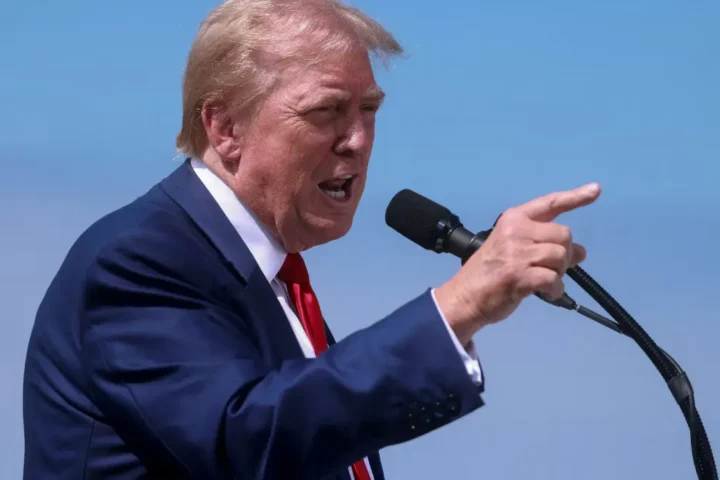The arrest of Mehul Choksi in Belgium on India’s extradition request has once again brought into focus one of the largest and most audacious financial scams in India’s history. The ₹13,500 crore fraud that shook the nation’s banking sector continues to unravel new details about the deep and complex web of deceit. At the heart of this massive scam were two individuals: Nirav Modi, a high-profile jeweller, and his uncle Mehul Choksi, who was the managing director of Gitanjali Gems. Together, they managed to manipulate the systems at Punjab National Bank (PNB), India’s second-largest public sector bank, causing a loss of ₹13,500 crore.
The Anatomy of the Scam
The scam, which came to light in 2018, involved the fraudulent issuance of Letters of Undertaking (LoUs), which are used by banks to facilitate trade credit. However, in this case, they were manipulated to secure enormous loans under false pretenses. LoUs, typically meant for short-term trade finance, became the central instrument in the scam. The fraud was perpetrated over several years, from 2011 to 2017, and involved a number of bank officials who colluded with Modi and Choksi to bypass the banking system’s checks and balances.
What Were LoUs and How Were They Misused?
LoUs are essentially bank guarantees issued to facilitate short-term credit for business transactions, particularly for importing goods. In the case of Modi and Choksi, they secured over 1,200 LoUs, far more than the 53 legitimate ones that were issued to their companies. The LoUs were meant to be used for importing pearls, a legitimate trade. Instead, the funds were diverted to other channels, used for personal gain, and laundered to obscure their origins.
The duo’s companies, primarily Nirav Modi’s and Mehul Choksi’s Gitanjali Gems, manipulated the system with the help of corrupt PNB officials. Gokulnath Shetty, a Deputy General Manager at the bank, was one of the key players who bypassed the core banking system to facilitate the fraudulent transactions. Over the course of the scam, they managed to obtain ₹11,400 crore ($1.77 billion) in loans through fraudulent LoUs, which were then diverted into personal and business ventures unrelated to the original purpose of importing pearls.
The Role of Mehul Choksi in the Fraud
Mehul Choksi’s involvement was integral to the operation of this massive fraud. Through his firm, Gitanjali Gems, and other associated companies, Choksi was central to the conspiracy. He allegedly conspired with corrupt bank officials to fraudulently acquire LoUs, alter Foreign Letter of Credit (FLC) facilities, and bypass the prescribed banking procedures. This enabled Choksi’s companies to benefit from the loans meant for trade purposes without ever using them for legitimate imports.
The Enforcement Directorate (ED) and Central Bureau of Investigation (CBI) have filed multiple charge sheets against Choksi, accusing him of money laundering, criminal conspiracy, and embezzlement. According to the investigations, Choksi’s fraudulent activities caused not only financial harm to PNB but also deeply affected the trust in India’s banking system.
The Flight and Extradition Battle
In early 2018, just before the scam was exposed, Mehul Choksi fled India, escaping with his family to Antigua and Barbuda. Choksi had obtained citizenship under a special investment program that allowed him to avoid extradition. His sudden flight marked the beginning of a protracted legal and diplomatic battle between India and Antigua, as Indian authorities sought to bring him back to face trial.
In 2021, Choksi made headlines again when he was found in Dominica, allegedly attempting to flee to Cuba. He claimed he had been kidnapped, a bizarre twist that only complicated his extradition process further. Choksi’s claim of being kidnapped was widely dismissed, and it delayed his return to India. However, his arrest in Belgium in April 2025 marks a significant development in this case.
The Legal and Financial Fallout
The PNB scam exposed severe vulnerabilities in India’s banking system, particularly in the public sector. It highlighted the ease with which insiders could exploit the system, leading to massive financial losses. In addition to the loss of ₹13,500 crore, the scandal damaged the reputation of PNB, the entire banking sector, and India’s economic standing.
The Enforcement Directorate and CBI’s investigations into the fraud were extensive, with multiple charge sheets filed and money laundering charges against several individuals involved in the scheme. The probe also highlighted how easily high-profile individuals like Choksi and Modi could manipulate the system, thanks to the complicity of a few corrupt bank officials.
The Path Forward: Will Choksi Face Justice?
The arrest of Mehul Choksi in Belgium is a step toward justice, but the legal process is far from over. India’s efforts to extradite Choksi back to face charges will be a significant test for international law enforcement cooperation. Meanwhile, the case remains a stark reminder of the need for greater accountability and transparency in India’s banking sector.
For India’s financial institutions, the PNB fraud is a cautionary tale. It underscores the need for strict regulatory measures, better surveillance of banking operations, and a more robust framework to prevent such large-scale frauds from going undetected for years.
Interesting Read
Conclusion: A Major Setback for India’s Banking System
The PNB scam, with its staggering ₹13,500 crore loss, is one of the most high-profile financial crimes in India’s history. It raises important questions about the integrity of the country’s banking system and the need for stronger regulations to prevent similar frauds in the future. As Choksi’s extradition proceedings move forward, the hope remains that justice will be served, and the system will be reformed to ensure such massive frauds are never repeated.







